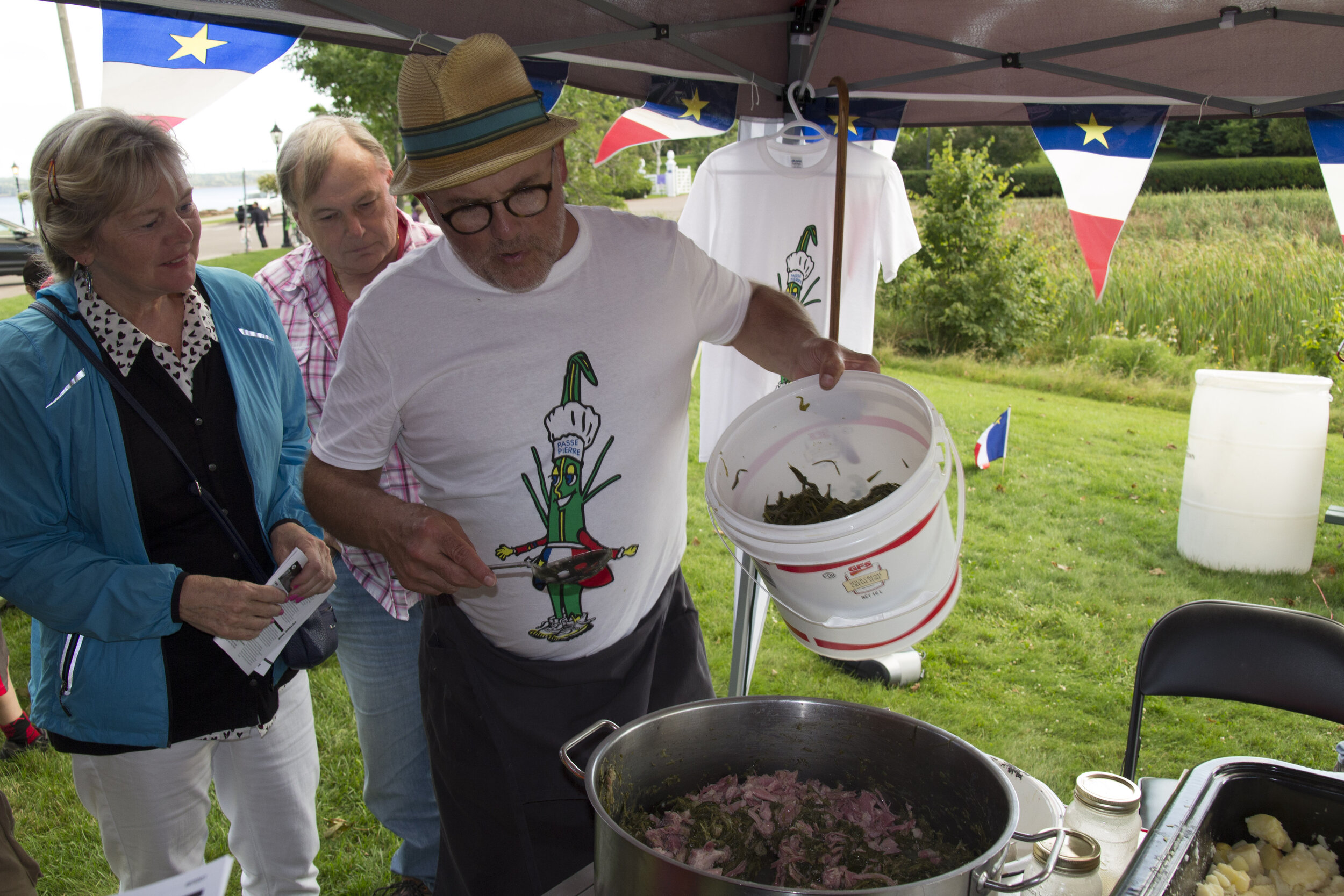Passe-Pierre (2017)
English text follows (in italics).
Photos : Norah Pendegrast
La performance et installation Passe-Pierre met de l’avant une coutume traditionnelle acadienne en voie de disparition, celle de la passe-pierre – une herbe salée poussant dans les marais vaseux de la Baie de Fundy – dont la consommation est une tradition culinaire propre à la vallée de Memramcook (N.-B.). Cette tradition était encore largement pratiquée en 1987 quand le comité organisateur des 8e Jeux d’Acadie a adopté la passe-pierre comme mascotte officielle des jeux en hommage à Memramcook, sa communauté d’accueil. Ainsi, un costume inspiré du logotype de Passe-pierre fut fabriqué par des artisans pour les jeux et ensuite donné au Musée de la société historique du Village de Memramcook où il repose toujours.
Passe-Pierre s’approprie l’image de marque des 8e Jeux d’Acadie afin de la rapporter à son sujet et de l’utiliser comme pont entre une coutume méconnue et le public. Présentée dans la forme d’un kiosque de marché typique des foires agricoles, l’œuvre emploie le costume original prêté par le musée, un panneau d’affichage original retrouvé dans un garage, une panoplie de décorations de drapeaux acadiens « quétaines », une trame sonore de casettes country acadiennes et de la passe-pierre cuisinée par un chef acadien. Les membres du public sont invités à vivre un moment à la fois étrange par son expérience visuelle kitsch et agréable par son expérience culturelle unique. La performance a une composante relationnelle qui me permet, par le biais du costume, de discuter avec les gens afin de leur communiquer l’histoire culturelle de la passe-pierre et d’échanger sur les pratiques culinaires traditionnelles de la région.
" This project called Passe-Pierre revolves around an edible plant that grows on the muddy banks of the Petitcodiac River in Memramcook called Passe-Pierre or in English Goose Tongue Greens. Gathered in mid-July by Acadians that follow a centuries old tradition of boiling it with salt pork or salting it in stoneware crocks, Passe-Pierre, in its appellation and preparation, has a cultural specificity to the Acadian community of Memramcook. Having grown up in Memramcook myself, gathering and eating this spinach-like blade of grass every summer with my family, I consider the whole tradition surrounding Passe-Pierre to be an integral part of my Acadian identity. The central gesture in my performance will be to offer Passe-Pierre to Islanders, both Acadian and Anglophone, engaging them in a conversation about common and differing culturally specific traditions.
Video stills of the foraging and preparation process.
Me and my grandfather removing roots and sifting debris.
Following my recent research in Acadian pop culture through archive documents and museum artefacts, I plan on borrowing a costume from the Memramcook Valley Historical Society’s collection created as a mascot for the 1988 Jeux d’Acadie (Acadian Games). The mascot, named Passe-Pierre, is a cartoon styled blade of grass dressed up in a chef’s toque, an apron with Acadian flag motif and basketball sneakers (see attached images). Throughout my performance, I will be wearing this costume as a way of facilitating interactions with people on the street, distributing Passe-Pierre to willing participants. "
My maternal grandmother and my mom came to Passe-Pierre decked-out in full Acadian pride garb – they organized this (welcomed) contribution to the project themselves without my knowing.







